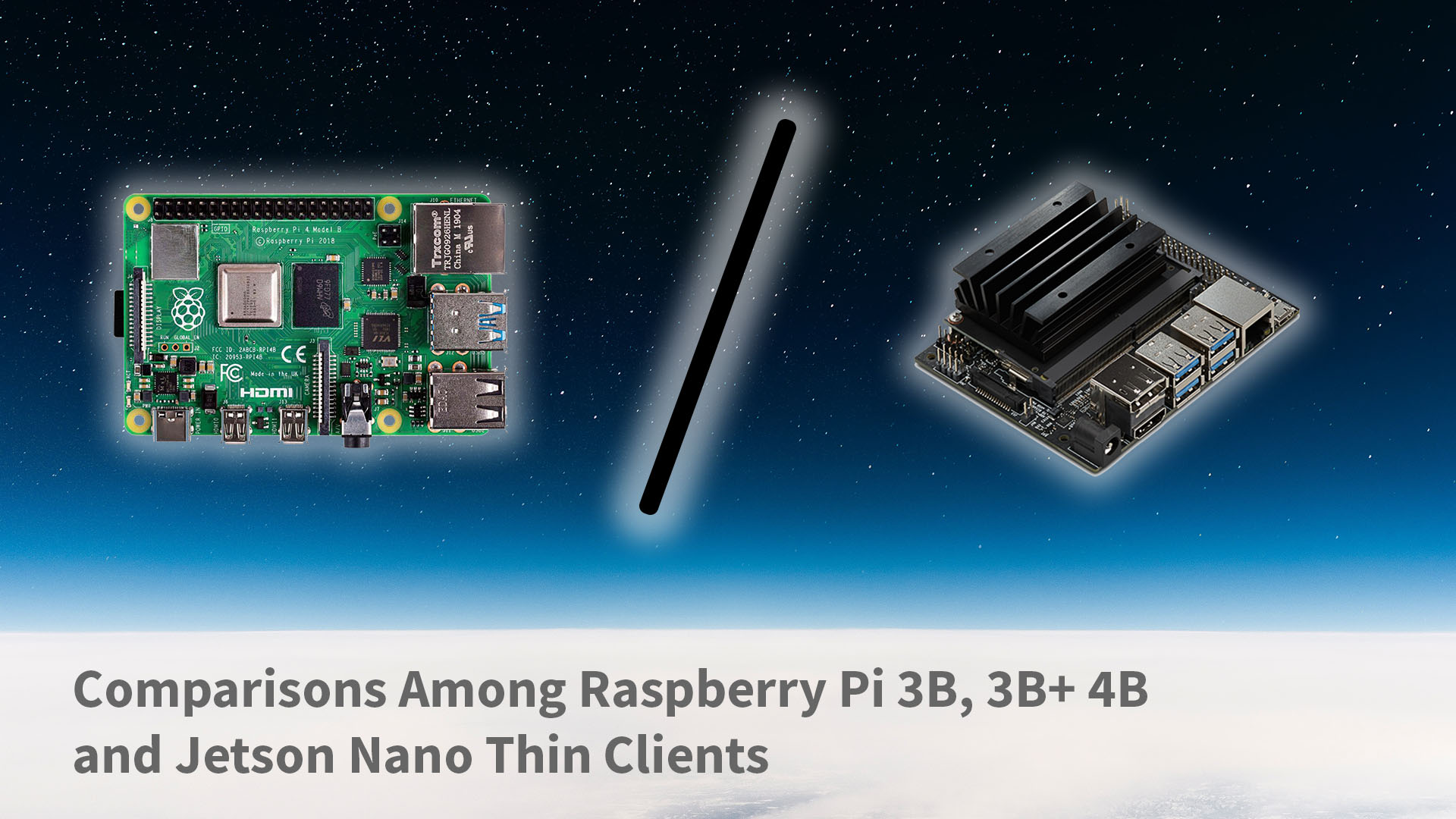A post by Tobias Kreidl, industry veteran and EUC technology legend.
Almost exactly a year ago, I had the opportunity to put together a guest blog on the Citrix site about further experiments with the Raspberry Pi and Workspace Hub making use of Stratodesk’s NoTouch client and management software. Before that, earlier tests were presented at the CUGC Great Plains XL event in Omaha, Nebraska, in April 2019.
I have meanwhile expanded these tests to include not only the Raspberry Pi (RPi) Model 4B, but have also added the Nvidia Jetson Nano into the mix. This should provide a bit more insight as to the performance characteristics of these units.
The Raspberry Pi vs the Jetson Nano
As before, hardware components consisted of various NComputing and ViewSonic modules, running under the same conditions as outlined in the Citrix blog article cited above. The releases for the RPi and Nano are early ones, hence it would be expected that the GA release should contain some further optimizations as far as the Citrix drivers are concerned. As before, these values represent snapshots that depict rough metrics of the performance characteristics of these various configurations.
Unfortunately, some of the performance characteristics are the result of limitations of the virtual machine itself, hosted on the server. In my case, the server was an older Dell R730 running Citrix XenServer 7.1 LTSR. In some additional tests, I increased the number of virtual CPUs (vCPUs) to 6 or even 8, and in some cases, there was a bit of an improvement. I was not, however, able to test a new enough version of the Citrix Workspace hub to be able to leverage Browser Content Redirection (BRC). Note however that currently BCR does not extend support beyond video rendering of 1080p, at least not for these thin clients.
The Findings
The table below summarizes the overall findings. Let’s examine these in a bit more detail.
 First off, as a separate comparison, I tried running the Nano as a standalone Linux box running the Ubuntu 18 operating system and with no GPU drivers installed. This clearly demonstrates that even pretty capable hardware alone isn’t going to achieve satisfactory results. It takes the proper combination of hardware and software to achieve more optimized results, as well as the ability to leverage a server back end. It undoubtedly would have done much better had it been able to tap into its powerful GPU.
First off, as a separate comparison, I tried running the Nano as a standalone Linux box running the Ubuntu 18 operating system and with no GPU drivers installed. This clearly demonstrates that even pretty capable hardware alone isn’t going to achieve satisfactory results. It takes the proper combination of hardware and software to achieve more optimized results, as well as the ability to leverage a server back end. It undoubtedly would have done much better had it been able to tap into its powerful GPU.
The older tests from the RPi 3B and 3B+ running Citrix Workspace Hub and Stratodesk NoTouch client packages have been augmented here with those from both the RPi 4B and Jetson Nano, each with 4 GB of on-board RAM. The same tests were run as before, multiple times, and representative metrics taken. Both GPUProfiler and RDAnalyzer proved once again to be indispensable during the testing.
Unfortunately, this did not include any GPU support. Even the limited metrics shown in the table point out how important a GPU is for video performance.
Interesting Results Gleaned from Raspberry Pi vs Jetson Nano
Interestingly, the results, in particular among the RPi 3B, 3B+ and 4B, are not significantly different. Some of this is undoubtedly due to not fully optimized versions of Workspace Hub. However, despite the greater potential power in the Nano, the results fell short of delivering better FPS, even compared to an RPi 3B. This, again, may well be attributed to the drivers not yet being optimized. If and when GPU support through BCR becomes available, the much more capable GPU (which is Maxwell-based on the Nano with 128 CUDA cores) should be able to do a very good job at rendering.
These preliminary results only give a hint at what potential these small SBCs have as thin clients and further development will make them even more serious alternatives to traditional x86 thin clients. You would be well advised to keep an eye on these next generation devices as they continue to develop.
About Tobias Kreidl
 Originally an astronomer by vocation, Tobias Kreidl, Ph.D., is an early user of CCD technology for imaging space objects. His major interests have long included image processing and data analysis, along with programming and systems and application administration. Since 1994, he has been an IT department employee at the Northern Arizona University, primarily involved in the academic side. He has served from 2016-2019 both as a Citrix Technology Professional (CTP) as well as an NVIDIA vGPU Community Advisor (NGCA). He has also spent several years on the Citrix User Group Community (CUGC) steering committee, most recently as its president. You can find Tobias on LinkedIn and Twitter.
Originally an astronomer by vocation, Tobias Kreidl, Ph.D., is an early user of CCD technology for imaging space objects. His major interests have long included image processing and data analysis, along with programming and systems and application administration. Since 1994, he has been an IT department employee at the Northern Arizona University, primarily involved in the academic side. He has served from 2016-2019 both as a Citrix Technology Professional (CTP) as well as an NVIDIA vGPU Community Advisor (NGCA). He has also spent several years on the Citrix User Group Community (CUGC) steering committee, most recently as its president. You can find Tobias on LinkedIn and Twitter.

